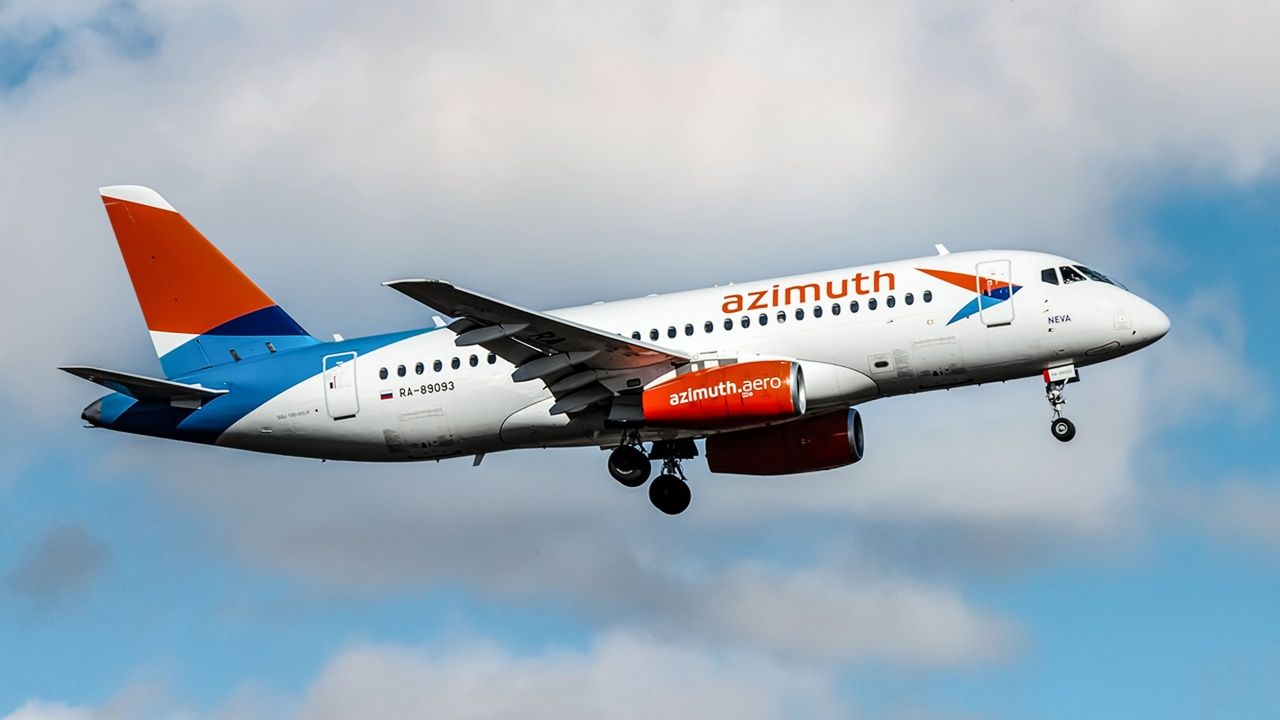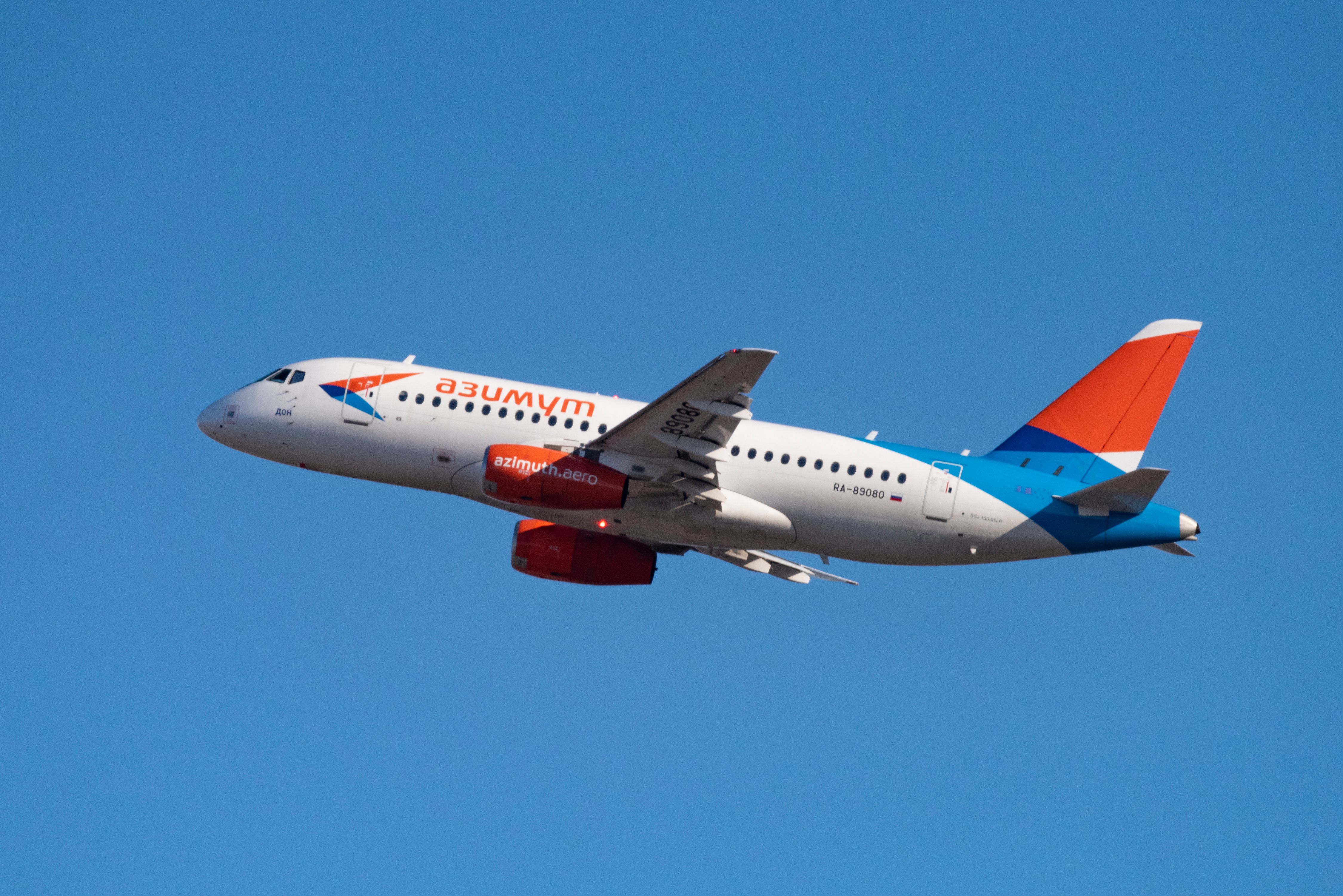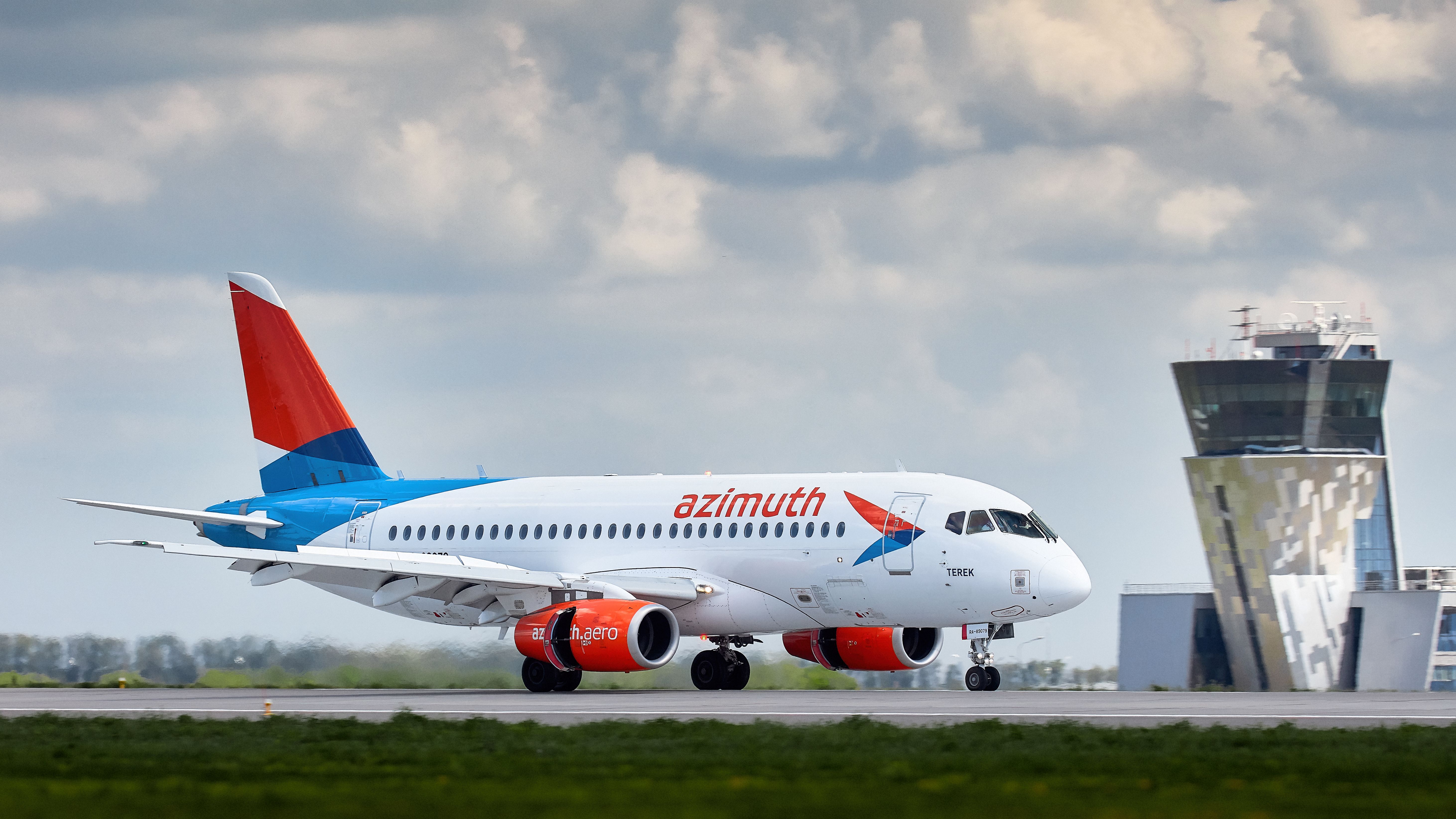A Russian-built Sukhoi Superjet 100-95LR
(operating Flight AZO5051) caught fire on the 24th of November after landing at Antalya Airport in Turkey (Antalya is a very popular Turkish leisure destination). Dramatic footage of the burning jet emerged on social media, showing passengers evacuating the runway with the aircraft ablaze in the background. All crew and passengers were successfully evacuated.
Russian aircraft incidents tripled in 2023 as the country suffered from international sanctions
(it is unclear if that trend has continued in 2024).
Superjet caught fire landing in Turkey
The Superjet 100-95LR’s left engine caught fire, and flames and smoke were visible from the aircraft’s engine as it landed at Antalya Airport. The aircraft had flown across the Black Sea from Russia’s southern city of Sochi. Aviation Safety Network reports, “The airline stated that the flight experienced windshear on landing.”
According to Aerotime, “first responders rushed to the plane, and all 89 passengers and six crew members were evacuated safely. No casualties or serious injuries were reported.” Turkish firefighters put out the fire, dousing it with fire extinguishing foam (the foam is visible in images underneath the aircraft) and spraying the engine to cool it down.
Photo: faustasyan | Shutterstock
The aircraft is registered RA-89085, and according to data from Flightradar24, it is seven years old. Russia’s Federal Aviation Authority, Rosaviatsiya, has stated that it is investigating the incident. The aircraft is operated by the Russian carrier, Azimuth Airlines
, which has a fleet of 20 Superjets.

Related
Putin Wouldn’t Be Killed In A Plane Crash: Kremlin Claims While Touting Russian Aerospace Prowess
Kremlin claims Russian aircraft are reliable and they would never crash while carrying the Russian president.
Russia’s beleaguered aviation industry
While the Russian Superjet is built domestically in Russia, it is not truly a Russian aircraft. Its PowerJet SaM146 turbofan engines are built by a joint venture between French Safran and Russian NPO Saturn.
Since the full-scale Russian invasion of Ukraine, Russia has been under Western aviation sanctions that have effectively shuttered Russia’s ability to manufacture domestic passenger jets (229 Superjets were built before the sanctions). Russia is trying to fit domestic engines to the Superjet and put it back into production. However, if the Superjet does go back into production, it will not be the same jet as before. For example, the MC-21’s Western parts are being substituted for Russian parts,
causing it to become 6 tons overweight and underpowered
.
Meanwhile, Russia has fired the heads of Yakovlev and Tupolev because of “the failure of the [Russian] civil aviation program.” Russia aims to produce 1,000 domestic passenger aircraft by 2030 to replace its existing fleet. If it can’t, it faces a crunch because it cannot buy new aircraft and it can’t keep its existing aircraft operational forever. Already,
half of the nation’s Airbus A320neos/A321neos are grounded
because Russia can’t service the engines. Half of the grounded jets are grounded to preserve the remaining engine life, while the other half are expected to never fly again.
Photo: Evgeniyqw l Shutterstock.
On 18 November, a Superjet was forced to make an emergency landing due to the aircraft depressurization. On 12 July 2024,
a Superjet crashed during a test flight after repairs (three crew were killed)
. So far, the
Superjet has suffered a total of four hull losses
.



